The Dawn of the Automation Age: Investing in Robotics and Automation Stocks
Welcome to a journey into one of the most dynamic and potentially lucrative sectors of the modern economy: robotics and automation. You’ve likely encountered automation in your daily life, perhaps in a self-checkout kiosk, a highly efficient warehouse, or even advanced features in your car. But what you see is just the surface.
We are standing at an inflection point where the confluence of artificial intelligence (AI), decreasing hardware costs, and expanding application areas is propelling the robotics and automation industry into an era of unprecedented growth. This isn’t just about replacing repetitive tasks; it’s about fundamentally reshaping industries, boosting productivity, and creating entirely new capabilities. For investors like us, understanding this transformation offers compelling investment opportunities.
Think of it like this: In the early days of the internet, investing in companies building the infrastructure and applications was key. Today, the infrastructure being built is physical *and* digital – intelligent machines and the software that powers them. Navigating this landscape requires a clear understanding of the underlying drivers, the key players, and where the most significant growth potential lies. That’s precisely what we will explore together. Are you ready to look beyond the traditional view of robots and see the future of automated intelligence?
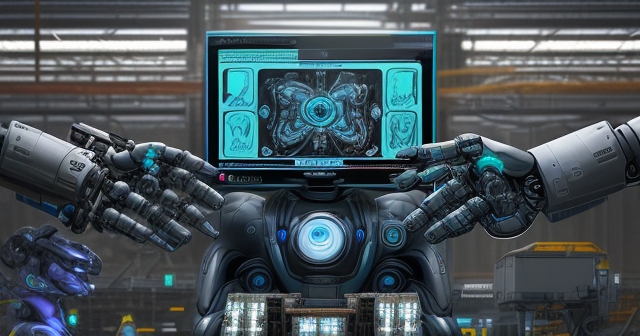
We will analyze emerging trends, key market players, and identify the sectors within robotics and automation that present the most promising investment opportunities. On this quest, having an understanding of different segments is crucial.
Understanding the Immense Market Potential of Robotics and Automation
When we talk about the robotics and automation market, we’re not discussing a niche industry; we’re talking about a massive, rapidly expanding global force. Market forecasts paint a clear picture of significant and sustained growth over the next decade and beyond.
Consider these projections: Estimates suggest the global robotics market is poised to reach figures like $169.8 billion by 2032 (Benchmark International), $218 billion by 2030 (GlobalData), and potentially soaring to $372.59 billion by 2034 (Precedence Research). These aren’t incremental increases; these are substantial leaps, representing Compound Annual Growth Rates (CAGRs) typically ranging between 14% and 15.1% for the overall market.
Within this broad market, specific segments show even faster acceleration. Robotic Process Automation (RPA), which focuses on automating digital tasks, is projected for a robust 19% CAGR. Even more striking, the integration of AI in robotics is forecast to grow at a staggering 28.1% CAGR by 2033. What does this tell us? It tells us the market is not only growing but evolving rapidly, with intelligence becoming the key differentiator.
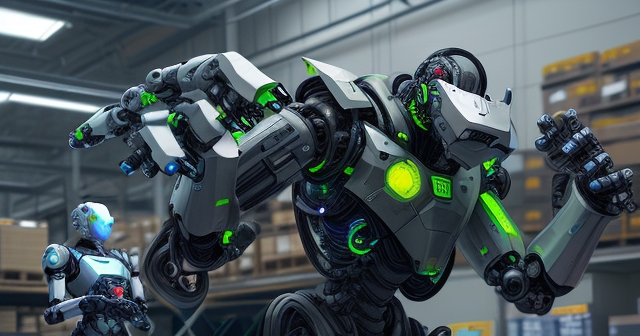
This growth isn’t confined to traditional manufacturing floors, though that remains a crucial area. Automation is now expanding rapidly into healthcare, logistics, agriculture, defense, space exploration, and even our homes. This diversification provides multiple avenues for investment and highlights the fundamental, cross-industry need for increased efficiency and capability that automation provides.
| Year | Projected Market Size | CAGR |
|---|---|---|
| 2030 | $218 billion | 14%-15.1% |
| 2032 | $169.8 billion | 14%-15.1% |
| 2034 | $372.59 billion | 14%-15.1% |
The Forces Propelling Growth: Artificial Intelligence & Cost Efficiency
So, what exactly is driving this accelerating adoption and market expansion? Two primary forces stand out: the transformative power of Artificial Intelligence (AI) and the significant decrease in the cost of robotic hardware.
First, Artificial Intelligence. AI is rapidly becoming the “brain” that elevates robots beyond simple, programmed actions. Early industrial robots were sophisticated tools, but they were largely rigid, performing the same task repeatedly. Modern robots, powered by AI, are becoming increasingly autonomous, adaptable, and intelligent. They can:
- Learn from data and experience.
- Perceive and understand complex environments.
- Make decisions in unstructured settings.
- Interact more naturally with humans (especially collaborative robots).
- Understand natural language commands.
This infusion of AI, including Machine Learning (ML), Natural Language Processing (NLP), and Generative AI, unlocks capabilities that were previously confined to science fiction. AI enables robots to perform more intricate tasks, handle variability, and integrate seamlessly into complex workflows, whether in a factory, operating room, or office. It transforms automation from a tool for simple repetition into a platform for complex, intelligent action.
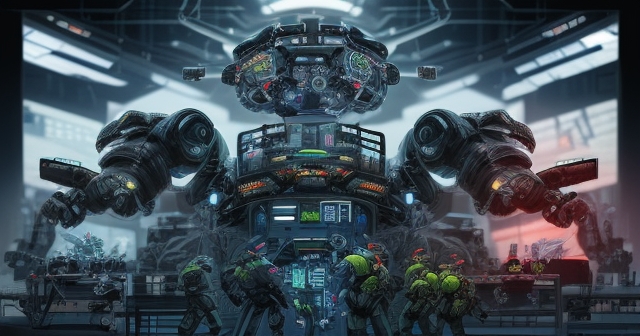
Second, the decreasing cost of hardware. While advanced robotics still represent a significant investment, the cost of industrial robots, in particular, has fallen dramatically. Reports indicate the average cost of an industrial robot has dropped from approximately $27,000 to around $10,856 by 2025. This cost reduction removes a major barrier to adoption, making automation accessible to a wider range of businesses, including small and medium-sized enterprises, and enabling more widespread deployment across industries.
Combined, AI makes robots smarter and more capable, while falling costs make them more accessible. This powerful synergy is the engine driving the current boom in robotics and automation, creating fertile ground for companies positioned at the intersection of these trends.
Artificial Intelligence: The New Operating System for Robots
Let’s delve a bit deeper into the pivotal role of Artificial Intelligence. If the robot’s physical structure is the hardware, AI is increasingly its operating system and applications. It’s not just about adding a camera or a sensor; it’s about enabling the robot to *understand* and *react* to the information it receives in intelligent ways.
Think about tasks that are easy for a human but hard for a traditional robot: identifying a specific object if its orientation changes slightly, navigating a dynamic environment with obstacles, or understanding the intent behind a human’s gesture. These are areas where AI, particularly machine learning and computer vision, provides the necessary intelligence.
Machine Learning (ML) allows robots to improve their performance on tasks over time as they process more data. For example, a robotic arm learning to pick up irregularly shaped objects or a surgical robot refining its movements based on analysis of previous procedures.
Natural Language Processing (NLP) and Generative AI are opening doors for more intuitive human-robot interaction. Imagine simply *telling* a collaborative robot what you need it to do, rather than programming it line by line. This is becoming possible, lowering the technical barrier for deploying robots in various settings.
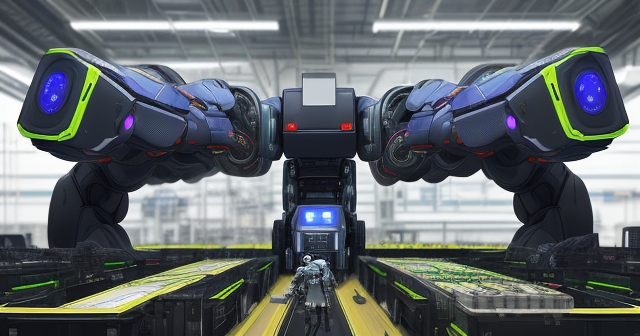
Furthermore, the concept of “agentic AI” is emerging, where AI systems can break down complex goals into sub-tasks, plan sequences of actions, and even course-correct based on feedback. When applied to robotics, this moves beyond simple task automation to goal-oriented autonomy, enabling robots to handle more complex, multi-step processes with less human oversight.
Companies that are mastering the fusion of AI software with robotic hardware are creating systems that are not just automated, but truly intelligent and adaptable. This technological integration is a critical factor for investors to evaluate when identifying leaders in the robotics and automation space.
The Chip Architects: Nvidia’s Dominance in AI Robotics
At the heart of many advanced robotic systems lies powerful processing capability, often fueled by the same technology that powers data centers and gaming PCs. This is where companies like Nvidia (NVDA) play a foundational role, acting as the chip architects for the age of intelligent machines.
Nvidia’s graphics processing units (GPUs), initially designed for rendering complex graphics, have proven exceptionally well-suited for the parallel processing required by AI and machine learning algorithms. This has made them indispensable for training and deploying AI models, including those used in robotics.
Beyond just GPUs, Nvidia offers dedicated platforms for robotics developers, such as the Jetson platform. This platform provides a complete AI computing solution for embedded systems, enabling developers to build and deploy AI-powered robots, drones, and autonomous machines. The more recent Jetson Thor is specifically designed for advanced robotics, including performance-hungry humanoid robots.
Nvidia isn’t stopping there. They are actively investing in the future of robotics AI with initiatives like Project GR00T, aimed at developing foundation models for humanoid robots. These models would allow robots to learn from human demonstrations, understand natural language, and perform complex tasks by observing human actions. This positions Nvidia not just as a hardware provider, but as a key enabler of the next generation of general-purpose robots, including platforms like Tesla’s Optimus.
For investors, Nvidia represents a play on the fundamental infrastructure powering the AI and robotics revolution. While its applications extend far beyond robotics (data centers, gaming, automotive), its deep integration into the AI stack makes it a critical component in the broader automation theme. Its strong revenue growth and market position reflect this foundational importance.
Robotics in Healthcare: Precision, Outcomes, and Growth
One of the most impactful and high-growth frontiers for robotics and automation is the healthcare sector. Here, robots are not just improving efficiency; they are directly enhancing patient outcomes, enabling less invasive procedures, and assisting medical professionals in ways previously unimaginable.
The healthcare robotics market is projected for substantial expansion, with estimates suggesting it could reach $84.8 billion by 2028. A significant portion of this growth is driven by surgical robotics, which alone is forecast to hit $45.9 billion by 2034. Why such rapid adoption?
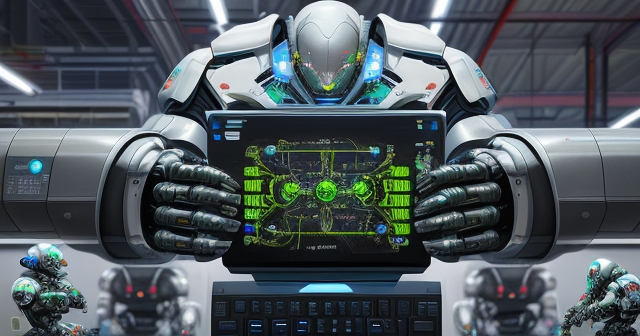
Robotic-assisted surgery offers numerous benefits:
- Enhanced Precision: Robotic arms can often make smaller, more precise movements than human hands, particularly in delicate or confined anatomical spaces.
- Minimally Invasive Procedures: This typically leads to smaller incisions, reduced blood loss, faster recovery times, less pain, and shorter hospital stays for patients.
- Improved Visualization: High-definition 3D cameras provide surgeons with a magnified, immersive view of the surgical field.
- Ergonomics for Surgeons: Surgeons operate from a console, which can reduce fatigue during long procedures.
Beyond surgery, automation is transforming other areas of healthcare, including pharmacy automation, lab automation, and even patient care assistance. AI is being integrated into diagnostic tools, AI-assisted virtual care platforms, and systems that analyze procedural data to provide insights for training and improvement.
This sector represents a critical area for investors interested in robotics stocks, offering exposure to companies developing specialized technologies with clear benefits for patients and healthcare systems. The demand is driven by aging populations, the increasing prevalence of chronic diseases, and the constant push for better, less invasive medical treatments.
Surgical Robotics: Pioneering Precision with Intuitive Surgical
When we talk about surgical robotics, one company immediately comes to mind as the dominant pioneer and market leader: Intuitive Surgical (ISRG). Their da Vinci surgical system is virtually synonymous with robotic-assisted minimally invasive surgery.
Intuitive Surgical has spent decades building an installed base of da Vinci systems globally, training surgeons, and developing a vast library of procedures that can be performed robotically. The da Vinci platform provides surgeons with highly articulated instruments controlled from a console, offering superior dexterity and control compared to traditional laparoscopic tools.
Intuitive Surgical’s business model is compelling; it’s not just about selling the expensive robot unit itself. A significant portion of their revenue comes from recurring sources:
- Instruments and Accessories: These are consumables used in each procedure.
- Service Contracts: Ongoing maintenance and support for the installed base.
This razor-and-blade model provides predictable revenue streams and high margins. The company continues to innovate, developing new instruments, enhancing visualization, and exploring how AI can further improve surgical outcomes, perhaps by providing real-time guidance or analyzing procedural data from thousands of surgeries.
While competition is emerging, Intuitive Surgical’s large installed base, extensive training ecosystem, and continuous innovation provide a strong competitive moat. For investors seeking exposure specifically to the high-growth surgical robotics segment, ISRG remains a critical company to analyze, representing a powerful example of how specialized automation can create significant value and improve human lives.
Beyond Surgery: AI and Robotics in Broader Medical Technology
While surgical robotics holds a prominent place, the integration of AI and automation extends across the broader medical technology landscape. Companies in this space are leveraging advanced technologies to improve diagnostics, streamline hospital operations, assist in patient rehabilitation, and enhance medical devices.
Consider companies like Stryker Corporation (SYK). While not solely a robotics company, Stryker is a major player in medical technology that is increasingly incorporating AI and automation into its offerings. They are involved in areas like surgical navigation systems, which use imaging and data to guide surgeons with precision, and robotic-assisted systems for specific procedures, particularly in orthopaedics.
Stryker’s strategic moves, such as the acquisition of companies that complement their portfolio, demonstrate a commitment to expanding their capabilities in areas that leverage advanced technology for healthcare. Their focus on improving patient outcomes through technology aligns with the broader trend of automation enabling better, more efficient medical care.
Other areas of medical automation include laboratory robotics for high-throughput screening and diagnostics, pharmacy automation systems to safely and efficiently dispense medications, and robotic systems designed for physical therapy and rehabilitation. AI is being applied to analyze medical images, predict patient deterioration, manage hospital workflows, and even develop personalized treatment plans.
| Application | Description | Market Size by 2028 |
|---|---|---|
| Surgical Robotics | Robotic-assisted minimally invasive surgery | $45.9 billion |
| Healthcare Robotics | Broad automation for patient assistance | $84.8 billion |
| Pharmacy Automation | Automate dispensing of medications | N/A |
Automating the Digital Workplace: The Rise of RPA with UiPath
Automation isn’t confined to the physical world of robots with arms and sensors. A significant area of growth is in automating repetitive, rule-based tasks performed on computers – the digital workforce. This is the domain of Robotic Process Automation (RPA), and a leading player in this space is UiPath Inc. (PATH).
Think of RPA as creating “software robots” that can interact with digital systems and applications just like a human worker. These robots can open emails, extract data from documents, fill out forms, move files, and perform tasks across multiple applications, following predefined rules.
UiPath provides an end-to-end automation platform that enables businesses to identify processes suitable for automation, build and deploy software robots, and manage their digital workforce. Their platform is designed to be user-friendly, often utilizing low-code or no-code interfaces, making it accessible to business analysts as well as developers.
The benefits for businesses adopting RPA are clear:
- Increased Efficiency: Software robots work 24/7 without getting tired.
- Reduced Errors: Robots follow rules precisely, minimizing human error.
- Cost Savings: Automating tasks can reduce operational costs.
- Improved Employee Satisfaction: Freeing up human workers from mundane tasks allows them to focus on more strategic and creative work.
- Faster Processing: Digital tasks can often be completed much faster by robots.
UiPath is now strategically integrating AI into its RPA platform, moving towards “intelligent automation” or “agentic automation.” This allows their software robots to handle more complex tasks that require understanding unstructured data, making decisions based on context, and even learning from interactions. Features like Clipboard AI or solutions for medical record summarization demonstrate this evolution.
For investors, UiPath represents a pure-play opportunity in enterprise automation software. While the RPA market is competitive, UiPath’s market leadership, extensive platform capabilities, and focus on AI integration position it strongly to capitalize on the continued demand for automating digital workflows across virtually every industry. It’s a key piece of the overall automation puzzle, extending the benefits of robotics beyond the physical realm.
Reimagining the Factory Floor: Industrial Automation Leaders
While emerging applications like surgical robots and RPA capture headlines, traditional industrial automation remains a colossal and evolving sector. Companies specializing in factory automation, manufacturing systems, and industrial controls are the backbone of global production and are undergoing their own transformation driven by digital technologies and AI.
Players like ABB (ABBN.Y), Rockwell Automation (ROK), and Fanuc Corporation (FANUY) are leaders in this space. They provide the hardware (robotic arms, controllers, motors, sensors) and software necessary to automate manufacturing processes, assembly lines, and logistics within factories and plants.
These companies are not just selling hardware; they are selling productivity, efficiency, and flexibility. As manufacturing becomes more customized and supply chains more complex, the ability to quickly reconfigure production lines using flexible automation systems becomes paramount. The adoption of cobots, which are easier to program and deploy, is a key trend enabling automation in areas previously deemed too complex or costly.
Rockwell Automation’s focus on industrial automation and digital transformation, Fanuc’s strength in CNC systems and factory automation products with global reach (including significant investments in the US), and ABB’s broad portfolio spanning robotics, motion, and electrification highlight the diverse ways companies contribute to automating the physical world of production. Investing in these companies provides exposure to the foundational automation necessary for global manufacturing and logistics.
Analyzing Robotics and Automation Stocks: What to Look For
Investing in robotics and automation stocks requires a nuanced approach. While the overall market growth forecasts are exciting, not every company will be a winner. As investors, we need to look beyond the hype and evaluate companies based on their fundamentals, market position, and technological edge.
| Factor | Description |
|---|---|
| Market Segment and Niche | Understanding dynamics and competitive landscape. |
| Technological Leadership and Innovation | Company’s R&D pipeline and AI integration. |
| Financial Health | Revenue growth, profit margins, and balance sheet strength. |
What factors should you consider when analyzing companies in this sector?
1. Market Segment and Niche: Is the company focused on industrial robots, surgical systems, RPA software, AI chips for robotics, or emerging areas? Understand the dynamics and competitive landscape of their specific segment. Is it a high-growth niche like surgical robotics, or a more mature but essential area like factory automation?
2. Technological Leadership and Innovation: Does the company have a strong R&D pipeline? Are they integrating cutting-edge AI? Do they hold valuable patents or have proprietary technology (like Intuitive Surgical’s da Vinci or Nvidia’s AI architecture)? Their ability to innovate is key to long-term success.
3. Financial Health and Growth Metrics: Look at traditional financial indicators such as revenue growth, earnings per share (EPS), profit margins, and free cash flow. Is the growth sustainable? Do they have a strong balance sheet? For growth companies, metrics like sales growth and re-investment are particularly important. Analyst ratings, such as a Zacks Rank (e.g., Strong Buy or Buy) or a high POWR Rating, can provide a useful starting point for your research, reflecting analyst sentiment on factors like growth, value, momentum, and quality.
4. Installed Base and Recurring Revenue (where applicable): For hardware-focused companies, a large installed base of systems (like ISRG’s da Vinci or industrial robot manufacturers’ deployed units) can generate stable, recurring revenue from service contracts and consumables. This can provide resilience even if hardware sales fluctuate.
5. Competitive Landscape and Moat: Who are their main competitors? What gives the company a sustainable competitive advantage (a moat)? Is it brand reputation, technological lead, switching costs (e.g., the cost/effort for a hospital to switch surgical robot platforms), network effects, or control over a key component (like Nvidia’s chips)?
6. Management and Execution: Does the management team have a clear strategy? Have they demonstrated the ability to execute on their plans, launch new products successfully, and navigate market cycles?
Evaluating these factors will help you differentiate between companies well-positioned to capitalize on the automation boom and those that might struggle in a competitive or rapidly changing market.
Investing in the Future: Capturing the Robotics and Automation Opportunity
The robotics and automation sector is more than just a collection of interesting technologies; it represents a fundamental shift in how work is done, how industries operate, and how society functions. As AI capabilities continue to advance and hardware becomes more accessible, the scope and impact of automation will only expand.
We’ve explored the immense market potential, the core drivers of growth in AI and cost reduction, and key segments ranging from foundational hardware and software to specialized applications in healthcare, enterprise, and even emerging frontiers like humanoids and space.
For you, as an investor or trader looking to understand and potentially capitalize on this trend, the key is diligence. The concepts might seem complex – AI agents, cobots, surgical platforms – but by breaking down the market into its components and understanding the value proposition of the companies within each segment, you can build a clearer picture.
The robotics and automation sector offers a compelling blend of growth potential, technological innovation, and tangible impact. By focusing on companies with strong fundamentals, clear competitive advantages, and a demonstrated ability to execute on their strategies, you position yourself to potentially benefit from this exciting and inevitable future.
Remember, the journey of learning and investing is continuous. Stay curious, keep researching, and approach this opportunity with a clear understanding of both the potential rewards and the inherent risks in any investment. The age of automation is here, and understanding it is key to navigating the future of investing.
robotic process automation stocksFAQ
Q:What are robotics and automation stocks?
A:Robotics and automation stocks are shares in companies that develop, manufacture, or utilize robots and automation technologies.
Q:Why is investing in robotics important?
A:The robotics industry is growing rapidly and presents significant opportunities for enhancing productivity across various sectors.
Q:How do I evaluate a robotics stock?
A:You should consider factors like market segment, technology innovation, financial health, competitive landscape, and management effectiveness.
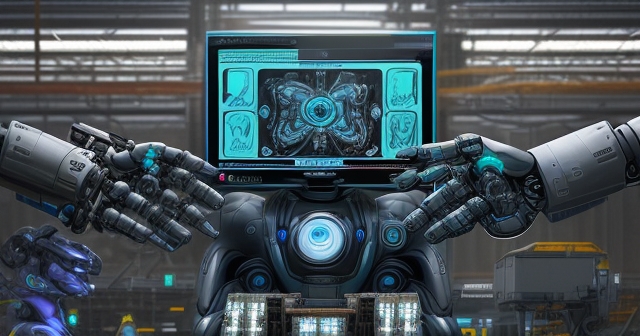
留言